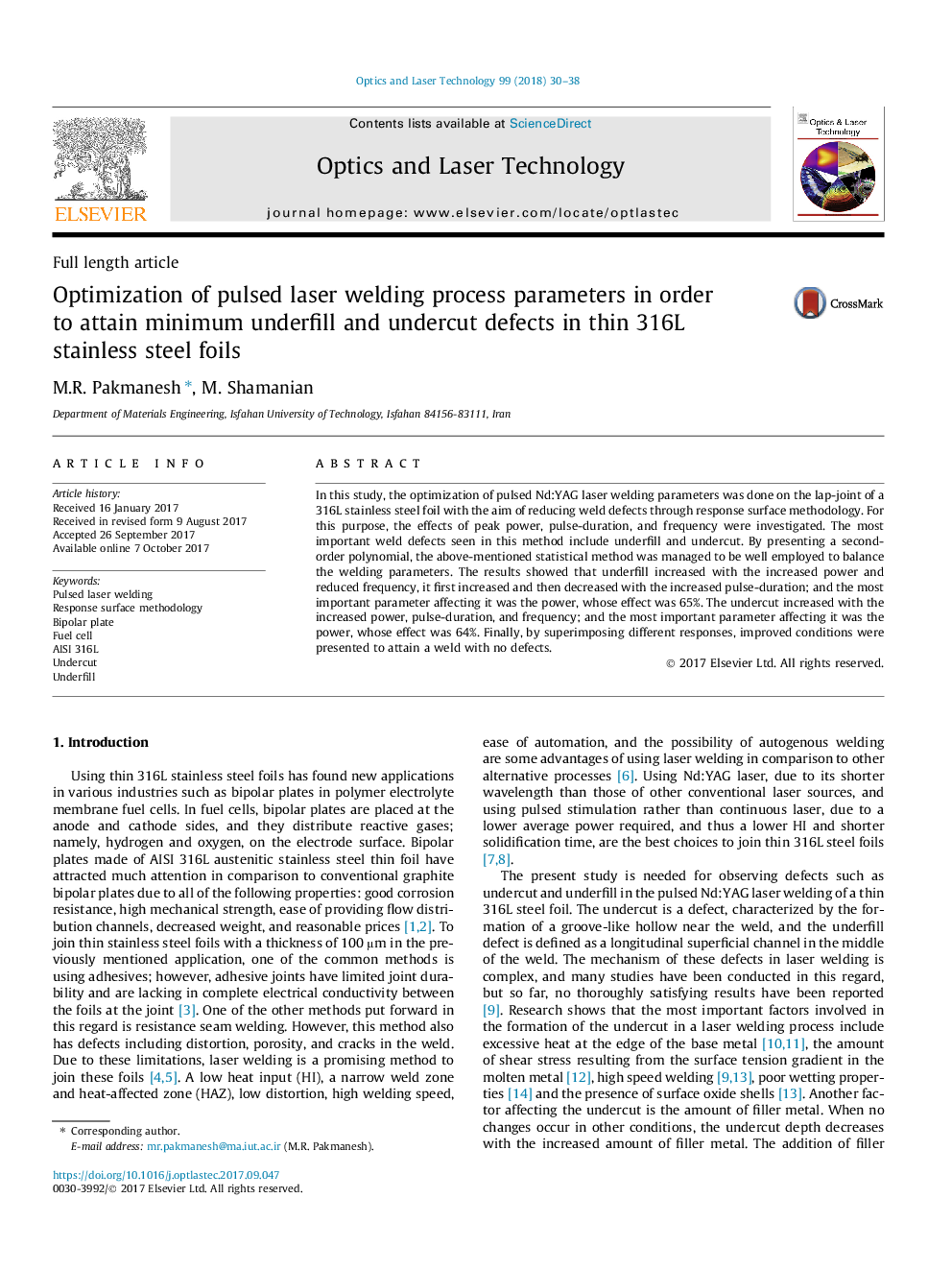| Article ID | Journal | Published Year | Pages | File Type |
|---|---|---|---|---|
| 5007278 | Optics & Laser Technology | 2018 | 9 Pages |
Abstract
In this study, the optimization of pulsed Nd:YAG laser welding parameters was done on the lap-joint of a 316L stainless steel foil with the aim of reducing weld defects through response surface methodology. For this purpose, the effects of peak power, pulse-duration, and frequency were investigated. The most important weld defects seen in this method include underfill and undercut. By presenting a second-order polynomial, the above-mentioned statistical method was managed to be well employed to balance the welding parameters. The results showed that underfill increased with the increased power and reduced frequency, it first increased and then decreased with the increased pulse-duration; and the most important parameter affecting it was the power, whose effect was 65%. The undercut increased with the increased power, pulse-duration, and frequency; and the most important parameter affecting it was the power, whose effect was 64%. Finally, by superimposing different responses, improved conditions were presented to attain a weld with no defects.
Keywords
Related Topics
Physical Sciences and Engineering
Engineering
Electrical and Electronic Engineering
Authors
M.R. Pakmanesh, M. Shamanian,
